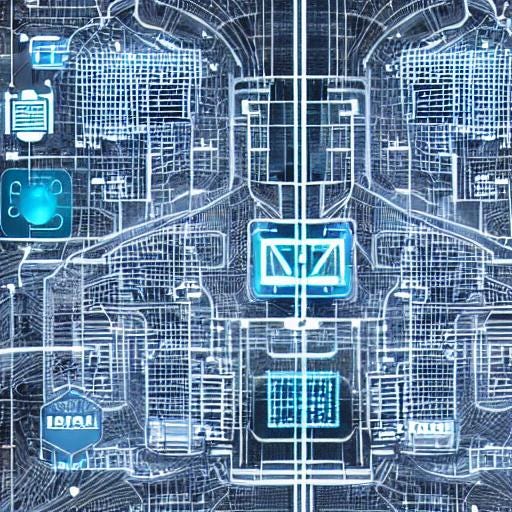Architecting a Generative AI System
Building Blocks and Beyond
In the domain of Generative AI, the architecture of a system is crucial for its functionality, scalability, and integration into various applications.
Here is an attempt to dissect the components of a typical Generative AI system and explore the broader implications and considerations that accompany its design and implementation.
Components:
1. Data Collection:
The foundation of any generative model lies in the data it learns from. Robust data collection involves sourcing relevant datasets, preprocessing them for quality and consistency, and augmenting them to enrich the learning process.
2. Generative Model:
At the heart of the system lies the generative model itself. Choosing the right algorithm or framework tailored to the application is essential. Training the model involves exposing it to the preprocessed data, allowing it to discern patterns and generate new content.
Generative models are at the core of any Generative AI system, responsible for generating new content based on the patterns learned from the input data. These models encompass a variety of algorithms and architectures, each with its own strengths and applications.
- Algorithm Selection: Choosing the right algorithm or framework is crucial and depends on factors such as the type of data, desired output format, and computational resources available. Common approaches include Variational Autoencoders (VAEs), Generative Adversarial Networks (GANs), and Autoregressive Models.
- Architecture Design: The architecture of the generative model determines its ability to capture complex patterns and generate high-quality outputs. Architectural choices include the number of layers, types of activation functions, and connectivity patterns between neurons or layers.
- Training Process: Training the generative model involves exposing it to the preprocessed data and iteratively updating its parameters to minimize the difference between the generated outputs and the ground truth. Techniques such as backpropagation and stochastic gradient descent are commonly used for this purpose.
- Loss Functions: The choice of loss function(s) plays a critical role in guiding the training process. Loss functions measure the discrepancy between the generated outputs and the ground truth and are used to update the model parameters accordingly.
- Regularization Techniques: Regularization techniques such as dropout and weight decay help prevent overfitting and improve the generalization ability of the generative model.
- Transfer Learning: Transfer learning techniques can be employed to leverage pre-trained generative models and fine-tune them for specific tasks or domains, reducing the computational cost and time required for training.
By designing and training the generative model, developers can create AI systems capable of generating wide and high-quality outputs across a wide range of applications, from image and text generation to music etc.
The generative model serves as the creative engine driving the output generation process in Generative AI systems. By understanding its architecture, training process, and associated techniques, developers can harness the full potential of generative models to create innovative and impactful applications.
3. Model Training:
Efficient model training requires distributed computing or GPU resources. Implementing mechanisms for checkpointing and versioning ensures reproducibility and facilitates model management.
4. Evaluation:
Metrics are crucial for evaluating the model's performance. Continuous monitoring during training helps gauge convergence and quality, guiding adjustments and improvements.
5. Hyperparameter Tuning:
Fine-tuning hyperparameters optimizes model performance. Implementing automated tuning mechanisms streamlines this process.
6. Model Deployment:
Deploying the trained model into a production environment requires careful consideration of infrastructure and implementation of APIs for seamless integration.
7. Scalability and Parallelization:
Designing for scalability involves accommodating increased loads, with parallel processing techniques optimizing performance.
8. Monitoring and Logging:
Comprehensive logging and monitoring tools track system performance and detect anomalies, crucial for debugging and optimization.
9. Security Measures:
Protecting sensitive data and models requires robust security measures, including encryption, access controls, and secure communication protocols.
10. Continuous Integration & Deployment (CI/CD):
Automating testing, deployment, and updates through CI/CD pipelines ensures efficiency and reliability in the development lifecycle.
11. User Interface:
For interactive applications, user interfaces facilitate seamless interactions and visualizations, enhancing user experience.
12. Feedback Loop and Model Improvement:
Establishing a feedback loop enables continuous learning and improvement. User feedback informs model adjustments, while periodic retraining with new data ensures adaptability to evolving patterns.
Beyond the Technical:
Ethical considerations, privacy concerns, and regulatory compliance are paramount. Integrating these considerations into the design process ensures responsible AI development and deployment.
The architecture of a Generative AI system encompasses broad range of technical components and broader societal considerations.
These elements holistically, can build AI systems that not only excel in performance but also uphold ethical principles and serve the needs of diverse stakeholders.
My book on Mindfulness titled “Mindfulness Cheatsheet for Beginners: Theory and Exercises” is now published on Amazon. Please buy to support my work.
On other platforms: Books2read (select locations only: North America, Europe and may be Australia.)
Other books on Amazon: Thank you and AMOR: Liquidated.
Feel at ease to buy books from my shop on Amazon.



